High Resolution DOT
Diffuse Optical Tomography
Diffuse optical tomography (DOT) is an approach to recover subsurface structures beneath the skin by measuring light propagation beneath the surface. The method is based on optimizing the difference between the images collected and a forward model that accurately represents diffuse photon propagation within a heterogeneous scattering medium. However, to date, most works have used a few source-detector pairs and recover the medium at only a very low resolution. And increasing the resolution requires prohibitive computations/storage.
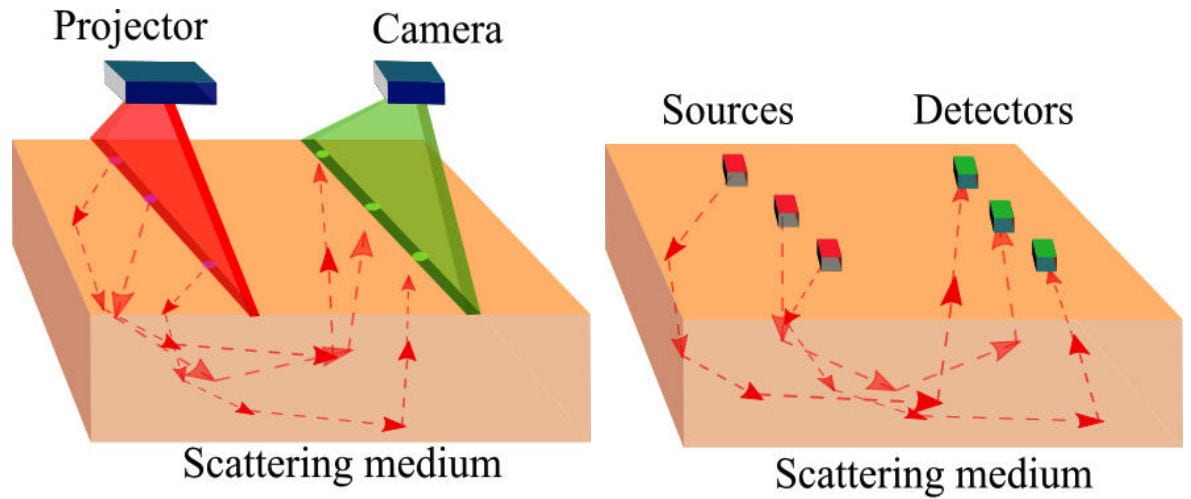
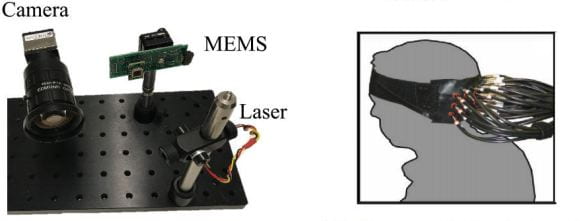
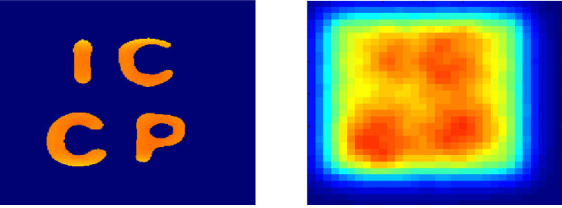
Compact and Programmable
More Info
Instead of separate detector source pairs, we use a high-resolution 2D camera and a MEMS projector to obtain a large number of effective source-detector pairs, as is commonly done in vision and graphics. This makes the DOT system much more compact and programmable.
High Speed
More Info
To increase the speed of acquisition, we illuminate a line on the skin and capture a different line in the sensor. This arrangement captures short-range indirect light transport much faster than point-to-point illumination and sensing. We develop a new design with a verged configuration that enables high spatial resolution imaging within a small region on the skin (approximately 8 cm x 8 cm).
High Resolution
More Info
We show that the convolution kernel is independent of the heterogeneous structure and only depends on the imaging configuration and the scattering properties of the homogeneous scattering medium. This allows us to recover the heterogeneous structures at much higher spatial resolution compared with the traditional DOT.
High Resolution DOT
In this work, we present a fast imaging and algorithm for high resolution diffuse optical tomography with a line imaging and illumination system. Key to our approach is a convolution approximation of the forward heterogeneous scattering model that can be inverted to produce deeper than ever before structured beneath the surface.We show that our proposed method can detect reasonably accurate boundaries and relative depth of heterogeneous structures up to a depth of 8 mm below highly scattering medium such as milk. This work can extend the potential of DOT to recover more intricate structures (vessels,tissue, tumors, etc.) beneath the skin for diagnosing many dermatological and cardio-vascular conditions.
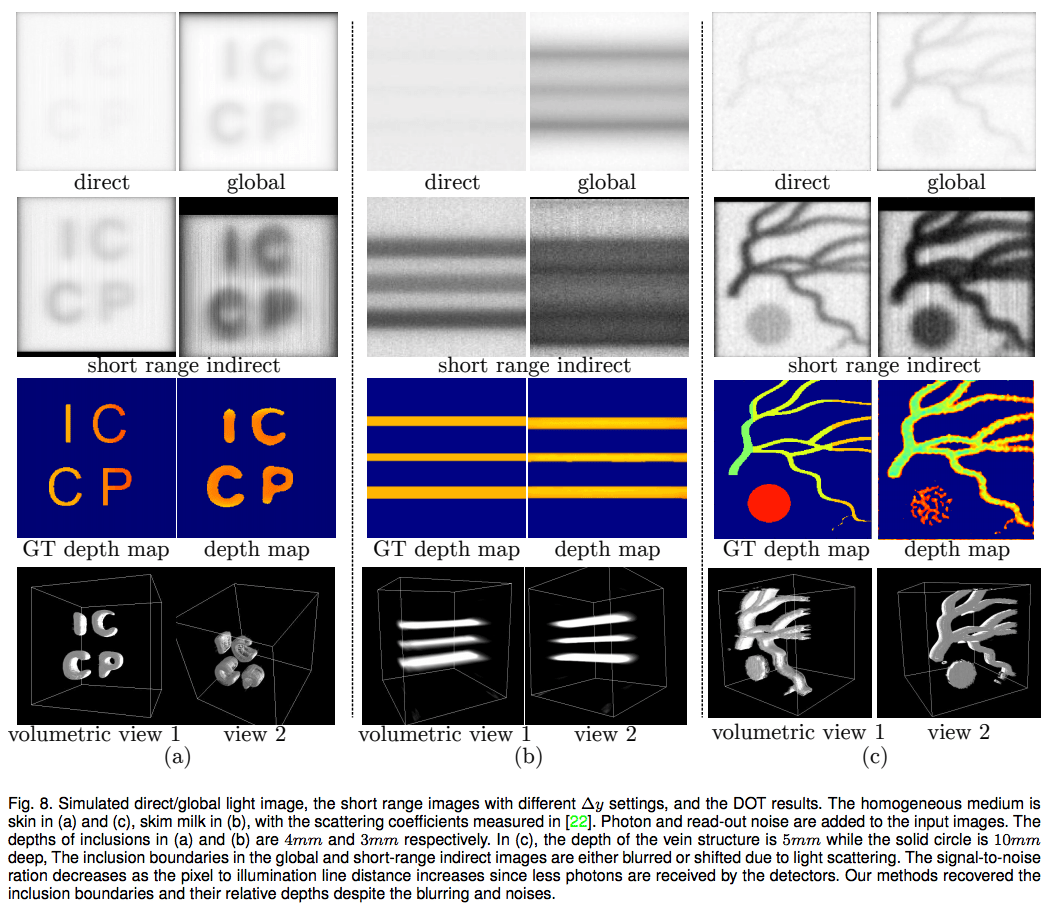
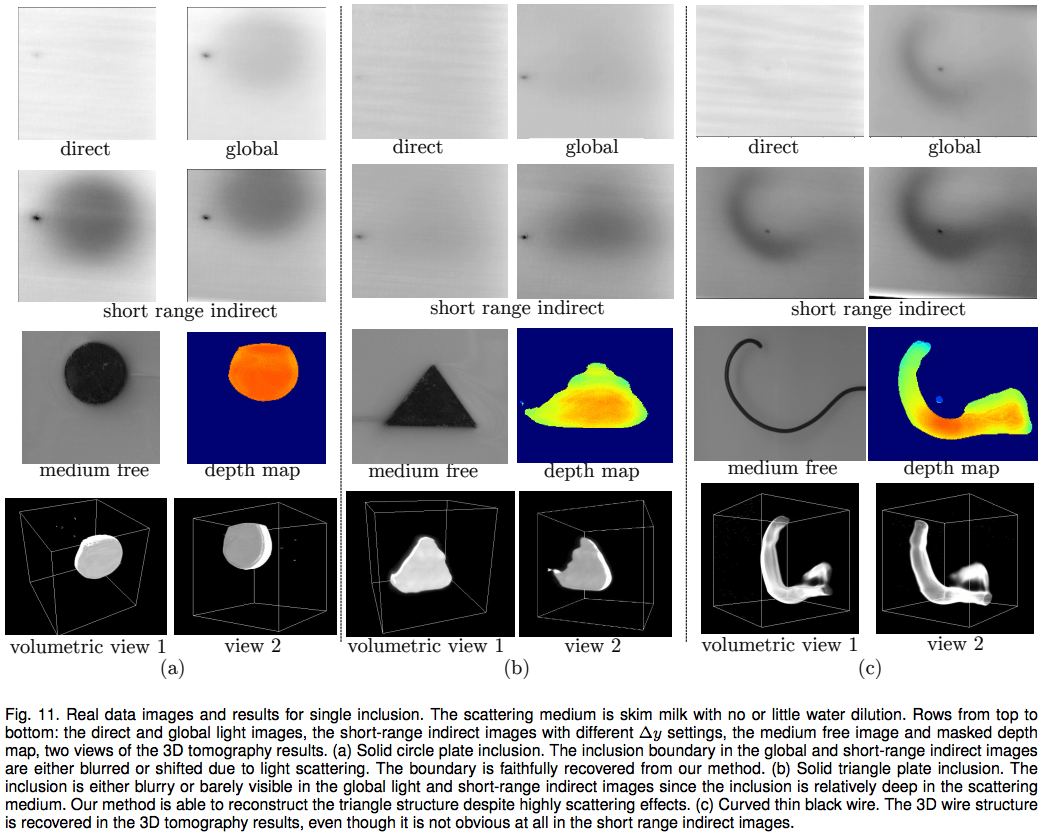
People

Chao Liu

Akash Maity

Artur W. Dubrawski

Ashutosh Sabharwal
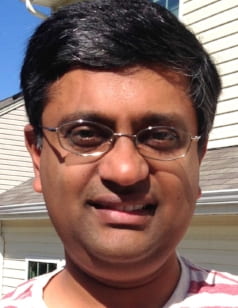
Srinivasa G. Narasimhan
